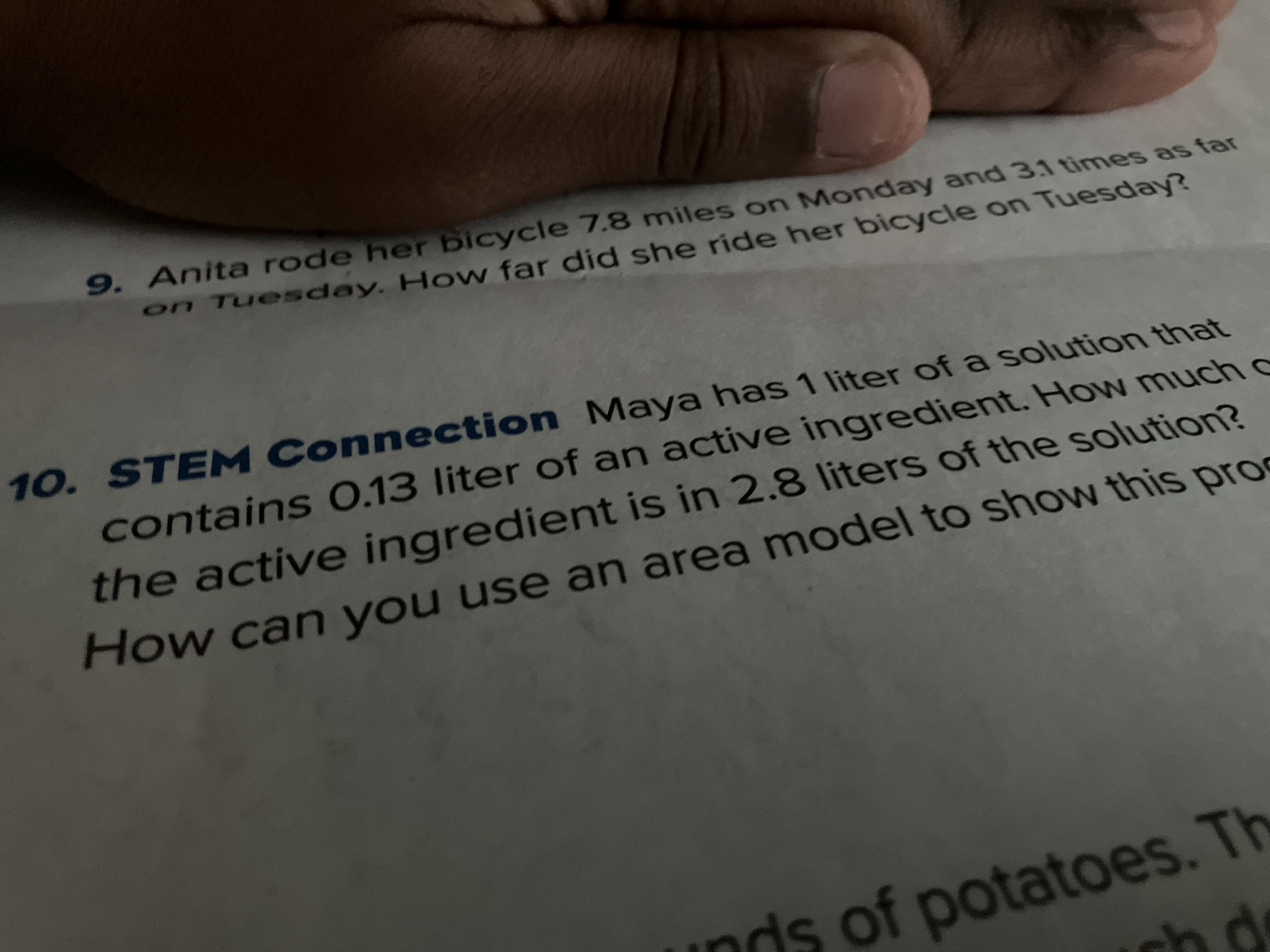Maya has 1 liter of a solution that contains 0.13 liter of an active ingredient. How much of the active ingredient is in 2.8 liters of the solution? How can you use an area model t... Maya has 1 liter of a solution that contains 0.13 liter of an active ingredient. How much of the active ingredient is in 2.8 liters of the solution? How can you use an area model to show this process?

Understand the Problem
The question is asking how to determine the amount of an active ingredient in a given volume of a solution based on its concentration, and how to represent this visually using an area model.
Answer
The amount of the active ingredient in 2.8 liters of the solution is $0.364$ liters.
Answer for screen readers
The amount of the active ingredient in 2.8 liters of the solution is $0.364$ liters.
Steps to Solve
- Identify the Concentration of the Active Ingredient
Maya's solution contains 0.13 liters of active ingredient in 1 liter of solution. This means the concentration is: $$ \text{Concentration} = \frac{0.13 \text{ liters}}{1 \text{ liter}} = 0.13 $$
- Calculate the Amount of Active Ingredient in 2.8 Liters
To find out how much of the active ingredient is in 2.8 liters of solution, multiply the concentration by the volume of the solution: $$ \text{Active Ingredient} = \text{Concentration} \times \text{Volume} $$ Substituting the values: $$ \text{Active Ingredient} = 0.13 \times 2.8 $$
- Perform the Multiplication
Calculate the result: $$ 0.13 \times 2.8 = 0.364 \text{ liters} $$
- Visual Representation Using an Area Model
You can represent the active ingredient visually by drawing a rectangle that represents the 2.8 liters of solution. Divide it into sections where one section represents the 0.13 liters of active ingredient proportionally.
The amount of the active ingredient in 2.8 liters of the solution is $0.364$ liters.
More Information
This problem illustrates how to scale concentrations based on different volumes and can be visualized through area models, making it easier to understand the relationship between volume and concentration.
Tips
- Miscalculating the multiplication; double-check calculations to ensure accuracy.
- Forgetting to convert volume units if necessary (though here both are in liters).
- Assuming the concentration changes with volume, when it remains constant unless specified.
AI-generated content may contain errors. Please verify critical information